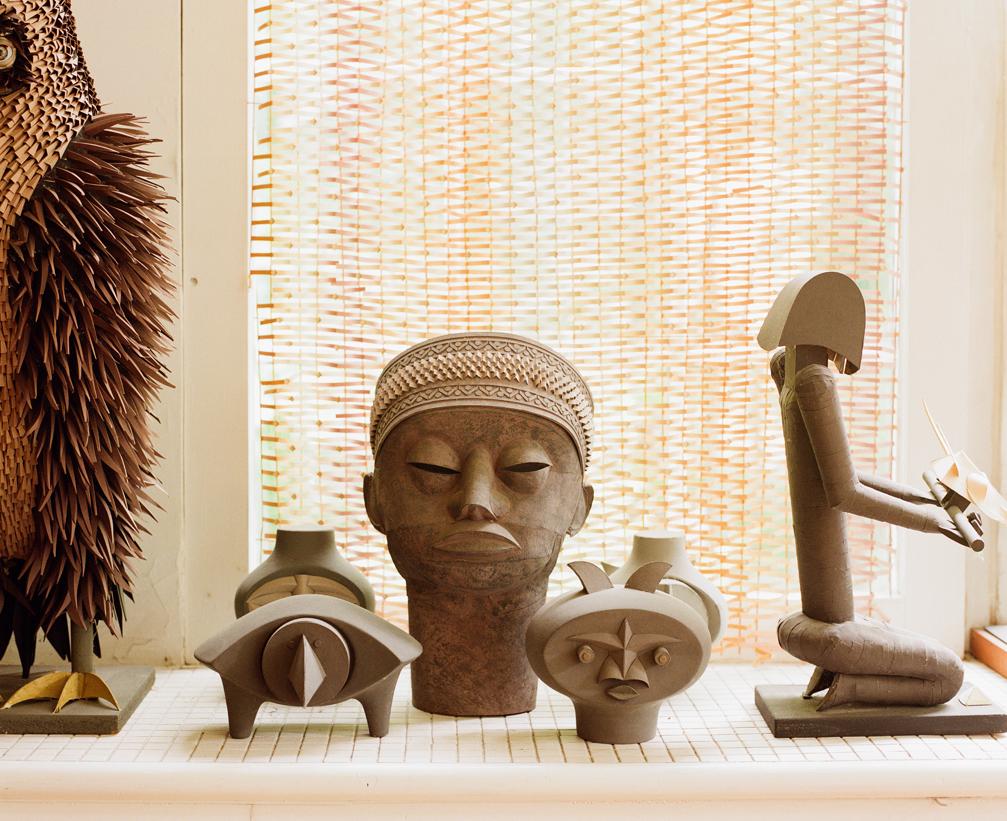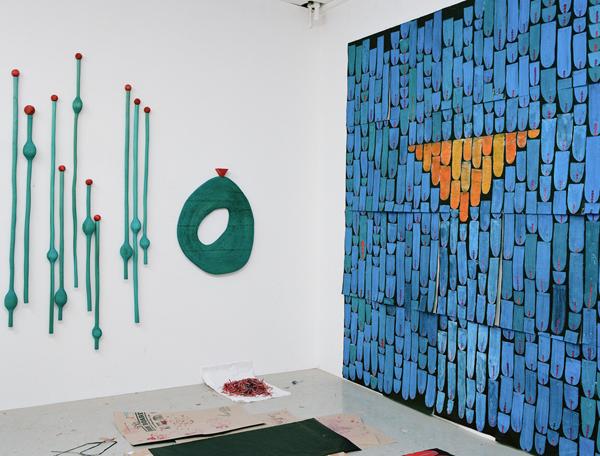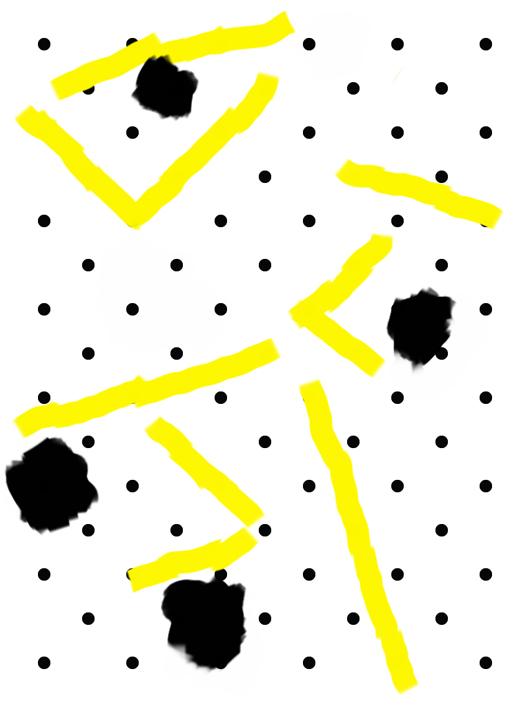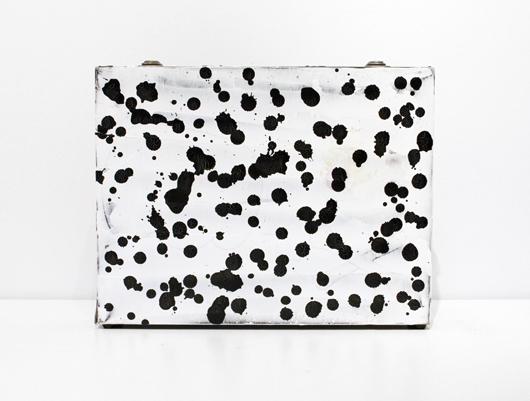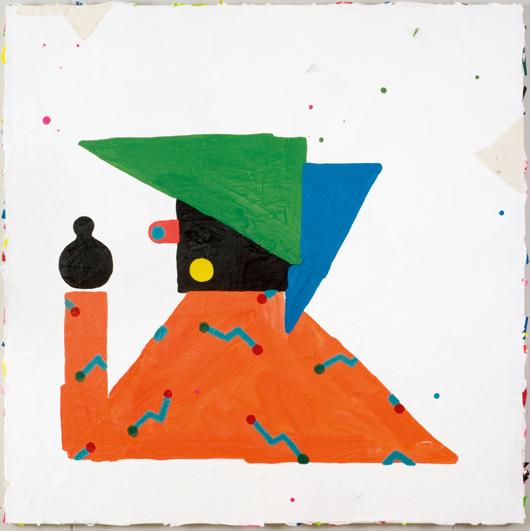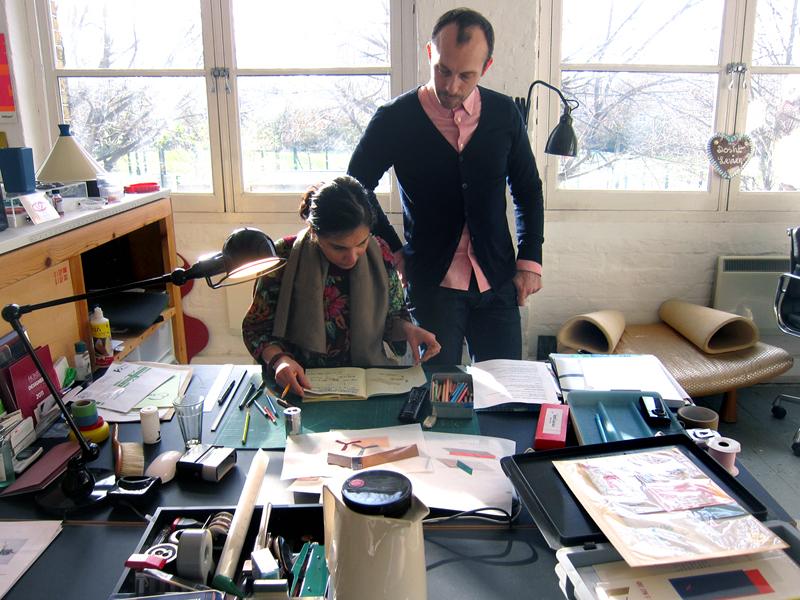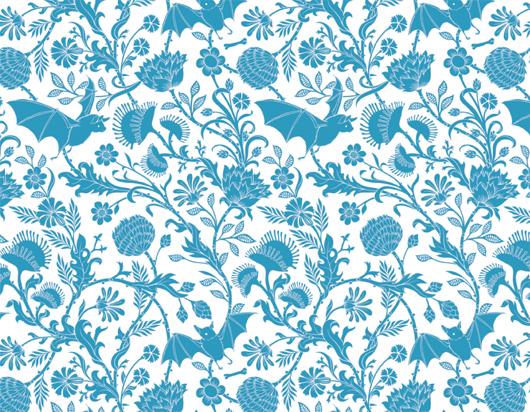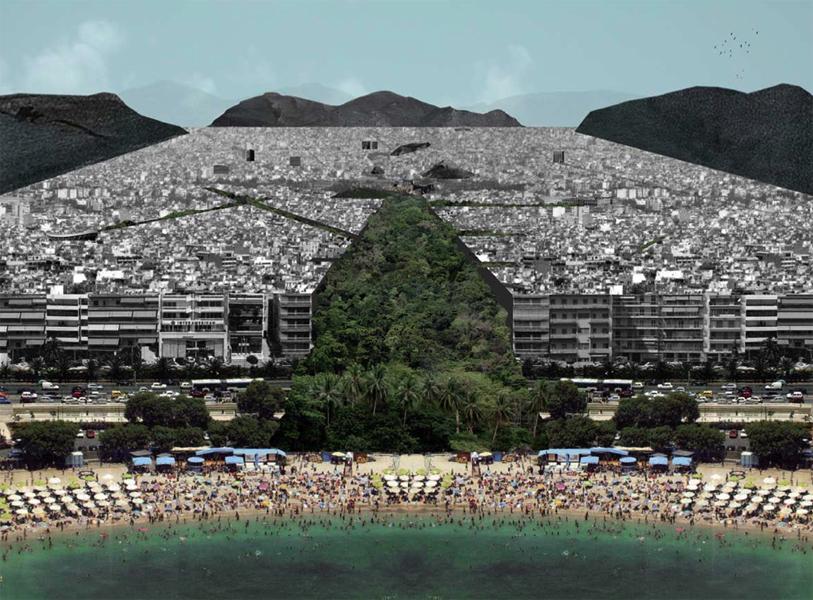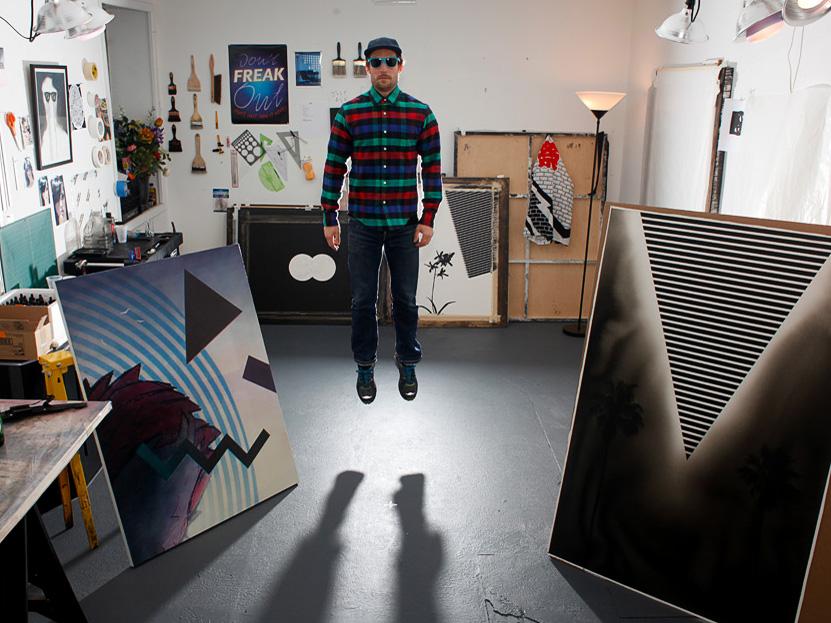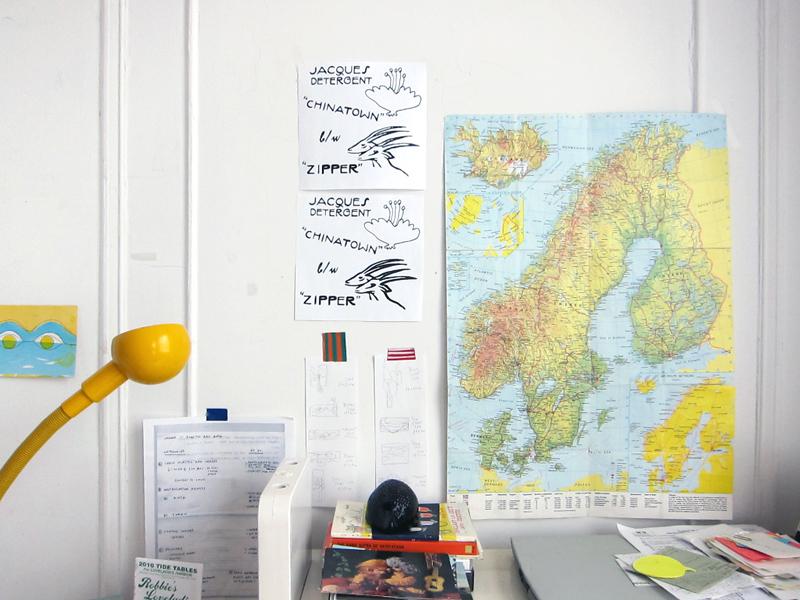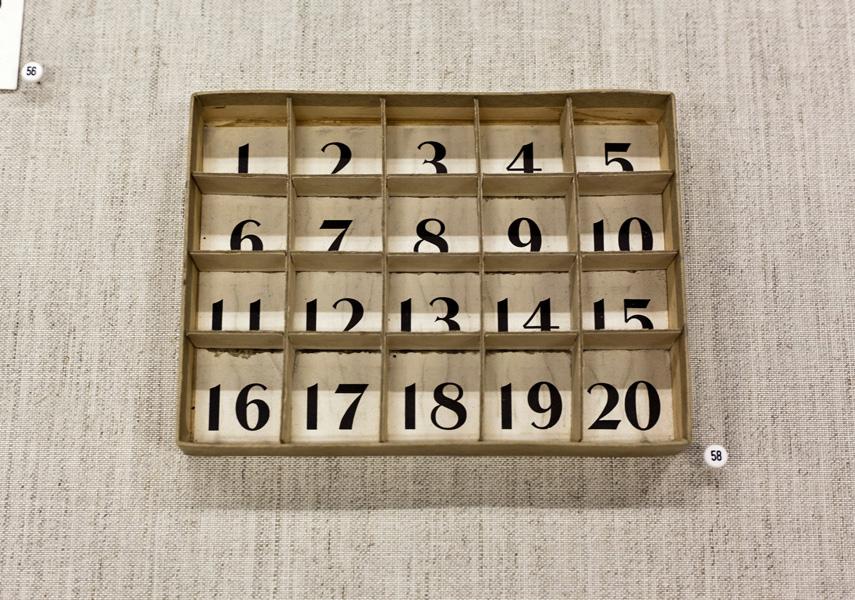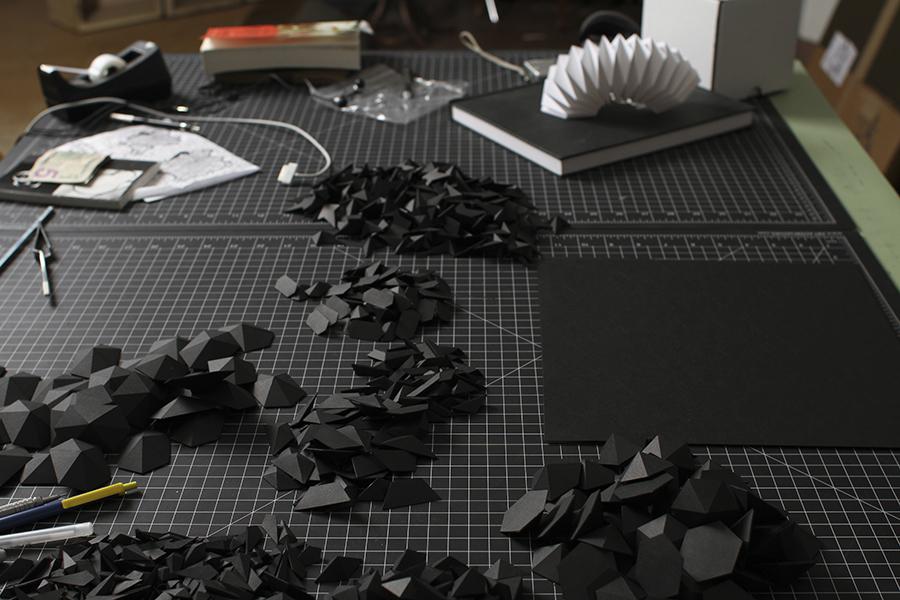
06.27.13
Studio Visit
Matthew Shlian, Paper Engineer
Knowing what we do about Matthew Shlian, it’s hard to believe that the Ann Arbor, Michigan–based artist ever thought he wanted to be a ceramicist. Ceramics is a medium of imprecision and risk, full of frequent failure and a high degree of unknowability. Shlian, on the other hand, can be found these days doing one of three things, each of which requires an almost uncanny amount of precision: drumming; working with scientists at the University of Michigan using paper to visualize structures at the micro and nano scales; or folding and gluing paper into intricate sculptures that range from 11x11-inch editions for Ghostly International to an 8-foot installation in the window of a New York Levi’s flagship. “I’ve always loved geometry,” Shlian says. “I understand spatial relations and I can envision the leap from 2D to 3D pretty easily. That kind of led the way to paper, and paper became the medium by which to execute a lot of my ideas.”
